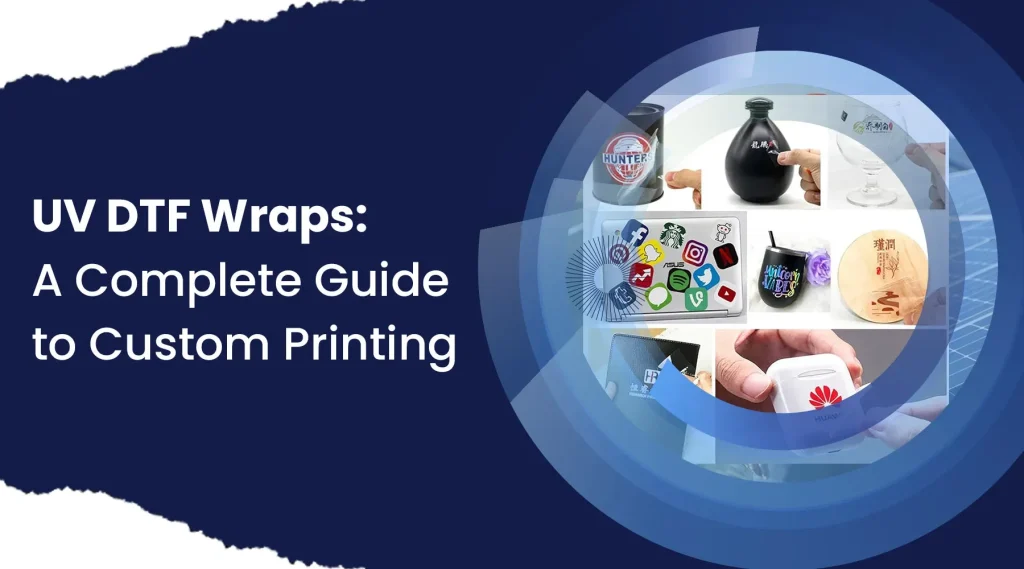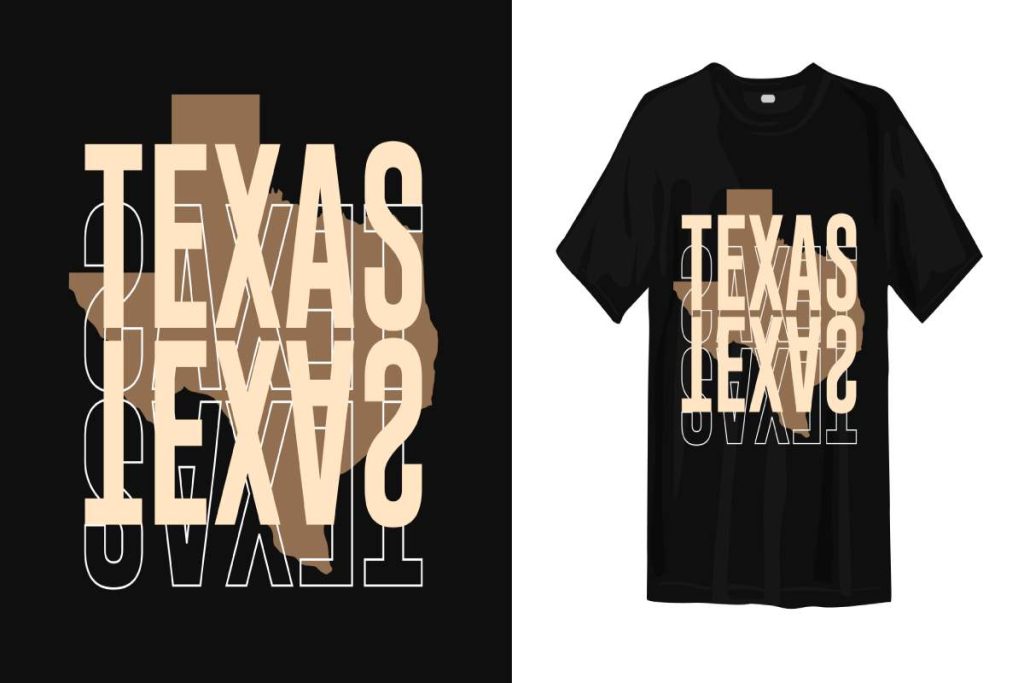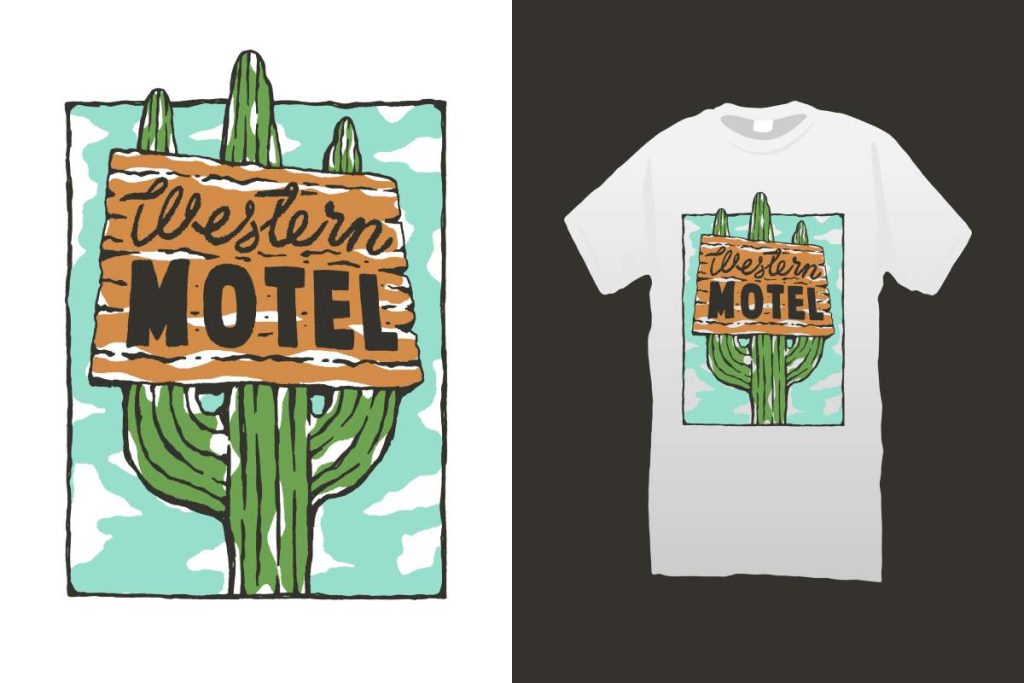UV DTF, or Direct-to-Film printing technology, has transformed the landscape of custom apparel printing, offering a fresh and dynamic way to create eye-catching designs. This innovative technique combines the robust qualities of UV printing with the efficiency of Direct-to-Film, allowing artists and business owners alike to produce vibrant, lasting images on a variety of fabrics. With UV DTF, the creative possibilities are endless, making it an essential tool for anyone serious about graphic design in the apparel industry. In this ultimate guide, we will delve into the intricacies of UV DTF printing, outlining necessary equipment like a heat press and DTF film, and share expert tips for achieving stunning, professional-quality results. Whether you’re new to printing or looking to upgrade your skills, mastering UV DTF will elevate your work and allow your custom apparel to truly shine.
When it comes to the realm of custom clothing production, the term UV Direct-to-Film is gaining vast attention as a cutting-edge solution. This methodology not only enhances the aesthetics of designs but also ensures their longevity, making them an attractive option for both retailers and creators. By utilizing a specialized film and heat transfer processes, individuals and businesses can produce high-quality designs that are as distinctive as they are durable. As we explore this fascinating subject further, you will discover essential tools like graphic design software and heat presses that play a pivotal role in shaping your custom apparel vision. Get ready to uncover the transformative potential of UV DTF technology for your fabric printing endeavors!
Understanding the Basics of UV DTF Technology
UV DTF (Direct-to-Film) technology represents a significant advancement in the field of custom apparel printing. This innovative method combines the benefits of traditional UV printing with the versatility of DTF techniques. The process begins with creating high-quality graphics that are printed onto a special film using UV inks. The unique curing method used in UV printing ensures that colors remain vibrant and are resistant to fading, making them ideal for various fabric types. This technology allows businesses to create intricate designs that can withstand wear and tear, thus enhancing the overall durability of the custom apparel.
Moreover, UV DTF printing minimizes the risks of ink bleeding and pixelation, which are common problems in conventional printing methods. The ability to print on different materials opens up a broader market for custom products, appealing to a wide range of target audiences. Especially for those in fashion and promotional merchandise, mastering UV DTF equips them with tools to innovate and offer unique designs that distinguish their brand in a competitive landscape.
Essential Equipment for Successful UV DTF Printing
To embark on your UV DTF printing journey, it’s crucial to invest in the right equipment. At the core of this setup is a high-quality UV printer, which is designed to handle the unique demands of printing on transfer film. Opting for a printer with advanced features such as high resolution and quick drying times can greatly enhance your productivity and print quality. Additionally, using the right type of DTF film is essential; it should be compatible with your printer and designed to retain color vibrancy and durability during the transfer process.
Another key component of UV DTF printing is the heat press, which is used to transfer the printed design onto fabric. Selecting a versatile heat press with adjustable temperature and pressure settings will enable you to work with various types of materials, ensuring a strong adherence of the ink to the fabric. Without the right equipment, achieving optimal results in custom apparel printing can become a challenge, which is why investing in quality machinery is a step that should never be overlooked.
Steps to Prepare Your Artwork for UV DTF
Preparing your artwork is a vital step before diving into the UV DTF printing process. Utilizing graphic design software, such as Adobe Illustrator or CorelDRAW, allows you to create high-resolution graphics tailored specifically for your target audience. Ensure that your designs are set in CMYK color mode to achieve accurate color representation during printing. Additionally, consider the final application by taking the time to test how colors appear on sample fabrics. This practice not only helps in visualizing the final product but also aids in making necessary adjustments before the actual printing begins.
Furthermore, it is essential to optimize your artwork for the transfer process by incorporating bleed areas and considering how designs will sit on different garment styles. This attention to detail will result in a more polished final product and can significantly enhance the appeal of your custom apparel. Creating mock-ups using your graphic design software can also be a useful tool to visualize how your design looks on various clothing items, ensuring that you are satisfied with your work before taking it to the next stage.
Executing the UV DTF Printing Process
Once your artwork is perfected and your equipment is set up, you can initiate the UV DTF printing process. Begin by loading the DTF film into your UV printer, ensuring correct alignment for flawless printing. The printer’s built-in curing lights play a vital role during this phase as they cure the ink immediately as it is printed, allowing for high-quality and durable results. Monitoring the printing process closely will help catch any potential issues early on, ensuring that the print adheres to your quality standards.
After printing, the next step is to cure the print completely before transferring it onto the fabric. It’s important to inspect the printed film to confirm that the ink has cured correctly. This step is crucial; if the ink is not fully cured, it may not adhere properly during the transfer process. Ensuring that each phase of the process is executed with precision can significantly affect the durability and look of your custom apparel.
Mastering the Transfer Process: Key Techniques
The transfer process in UV DTF printing is where the design comes to life on the fabric. Start by carefully cutting the printed film to the desired size, making sure to avoid any imperfections that could affect the final output. Next, preheat your heat press to the appropriate temperature as outlined for the specific fabric you are using. This step is critical, as different fabrics require different heat settings to ensure that the design adheres properly without damaging the material.
Positioning the film correctly is also key to a successful transfer. Place the film on the garment in the desired location, ensuring it is aligned accurately before applying heat. Closing the heat press and applying consistent pressure for the recommended time will set the design significantly. Once the transfer process is complete, allowing the garment to cool down before peeling off the film will help solidify the ink on the fabric. Mastering these techniques can lead to high-quality transfers that endure, solidifying your reputation for excellent custom apparel.
Exploring Advancements in UV DTF Technology
The ongoing development in UV DTF technology is worth noting, as it continues to improve the functionality and quality of custom apparel printing. Recent advancements have introduced enhanced color accuracy and improved durability, ensuring that the prints made with UV DTF remain vibrant and intact over time. This evolution not only allows print shops to expand their offerings but also promotes sustainability by providing more options for eco-friendly inks and films.
With more suppliers entering the market, businesses now have the flexibility to choose from a wider selection of materials tailored for UV DTF printing. This variety enables creators to experiment with different fabrics and surfaces, maximizing creativity in their apparel designs. As you stay informed about these advancements, you’re better prepared to leverage new opportunities, whether you’re developing unique products or enhancing your existing printing processes in the competitive custom apparel market.
Frequently Asked Questions
What is UV DTF printing and how does it work?
UV DTF printing is a new custom apparel printing technology that combines traditional UV printing with Direct-to-Film methods. It involves printing vibrant designs onto a specialized film which is then transferred to fabrics using heat and pressure. This process results in eye-catching, durable graphics that enhance any custom apparel.
What equipment do I need to start UV DTF printing?
To start UV DTF printing, you’ll need a quality UV printer, heat press, and high-quality DTF film. The UV printer prints directly onto the film, while the heat press is used to apply heat and pressure to transfer the design onto various materials effectively.
How do I prepare artwork for UV DTF printing?
When preparing artwork for UV DTF printing, use graphic design software like Adobe Illustrator or CorelDRAW. Ensure that your designs are high-resolution and in CMYK color mode for accurate color output. Testing colors on sample fabrics is also advised to see how the prints look before finalizing the design.
Can I use any type of fabric for UV DTF printing?
Yes, UV DTF printing is versatile and can be used on a variety of fabrics. However, it’s crucial to consider the specific heat settings and pressure adjustments required for different materials to ensure the successful transfer and durability of the prints.
What are the benefits of using UV DTF for custom apparel?
The benefits of UV DTF printing include vibrant colors, exceptional durability, and the ability to print intricate designs on various fabric types. This technology opens up endless possibilities for creative custom apparel designs, elevating your products in the market.
Where can I learn more about mastering UV DTF printing?
To learn more about mastering UV DTF printing, explore resources such as blogs from Printful and Printivity for insightful articles. Additionally, consider joining webinars and training courses offered by industry experts to enhance your skills and stay updated on the latest technologies.
| Key Points | Details |
|---|---|
| UV DTF Printing | A hybrid printing technique that combines UV printing with the Direct-to-Film method, allowing for long-lasting, vibrant prints on fabric. |
| Essential Equipment | 1. UV Printer: For direct printing on transfer film. 2. Heat Press: To transfer designs from film to fabric with heat and pressure. 3. DTF Film: Specialized films that enhance print quality and durability. |
| Steps to Mastering UV DTF | 1. Prepare Artwork: Use design software and test colors on sample fabrics. 2. Printing Process: Load DTF film, print, and cure the design. 3. Transfer to Fabric: Cut film, set heat press, apply pressure, and cool. 4. Finishing Touches: Peel film, conduct a quality check. |
| Advancements in Technology | New innovations have improved color accuracy and durability, expanding the range of applications for UV DTF printing. |
| Learning Resources | Articles, blogs, webinars, and training courses are available for those wanting to deepen their understanding of UV DTF printing. |
Summary
UV DTF, or UV Direct-to-Film printing, is at the forefront of modern custom apparel techniques, combining durability and vibrancy in textile printing. This innovative process revolutionizes how designs are applied to garments, ensuring they withstand the test of time while retaining visual appeal. From understanding the critical equipment required to mastering the step-by-step process of artwork preparation, printing, and transfer, this guide equips you with all the essential knowledge needed to excel in the UV DTF field. With advancements in technology enhancing color accuracy and print longevity, UV DTF presents exciting opportunities for businesses and creatives alike, making now the perfect time to embrace this transformative printing technique.



